DAY-3 GOVERNMENT
Many freedom fighters and activists recognized that to change the system, you had to become a part of the system–not in submission to the subversion but in response to it. By running for and attaining public office, the people would have someone to represent them, who looked like them. Previously, they did not have a voice at the table; they weren’t even permitted to participate. Overcoming this type of oppressive cultural bias is the change that Sam Cook sang about in his song “Change Is Going to Come.”
However, as the story unfolded, principles such as commitment, perseverance, and an unyielding faith gave way to the first local officials–then state, and soon after, the house of representatives and senate. Let there be no mistake; attaining the position was a means to an end. There was no satisfaction with attainment alone. Our collection includes difference-makers whose hard work and sacrifice brought to bear lasting freedom for black people and the push to see “We the People” mean ALL PEOPLE!.
Then, alas, like the morning sun reflection after a long night stretches across the ocean waves, the hope of a better future hung in the balance. Suddenly, the substance of things hoped for and the evidence of things not seen was standing right in front of us. Again I say, attainment was not the end game, but a means to spread further than ever before the reflection of hope in our nation’s heart. Although, there is much more work to do. We have faith to believe that we can be the change we want to see.
Again I say, attainment is not the end game, but a means to spread further than ever before the reflection of hope in our nation’s heart.
PHILIP GREENE – EMPOWER COFOUNDER
BARACK OBAMA THE 44TH PRESIDENT OF THE UNITED STATES OF AMERICA
President Barack Obama was elected the first African-American president of the United States on November 5, 2008, transcending centuries of inequality in America. Watch Video
Barack Obama, the 44th president of the United States and the first African American president, was elected over Senator John McCain of Arizona on November 4, 2008. Obama, a former senator from Illinois whose campaign’s slogan was “Change we can believe in” and “Yes we can,” was subsequently elected to a second term over Massachusetts governor Mitt Romney. A winner of the 2009 Nobel Peace Prize, Obama’s presidency was marked by the passage of the Affordable Care Act, or “Obamacare”; the killing of Osama bin Laden by Seal Team Six; the Iran Nuclear Deal and the legalization of gay marriage by the Supreme Court.
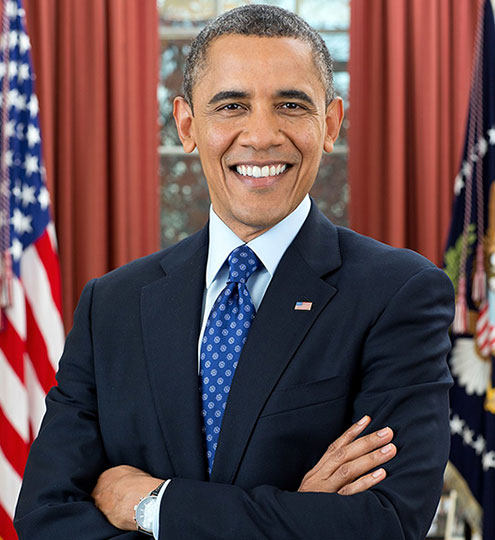
President Barack Obama 
The First Family 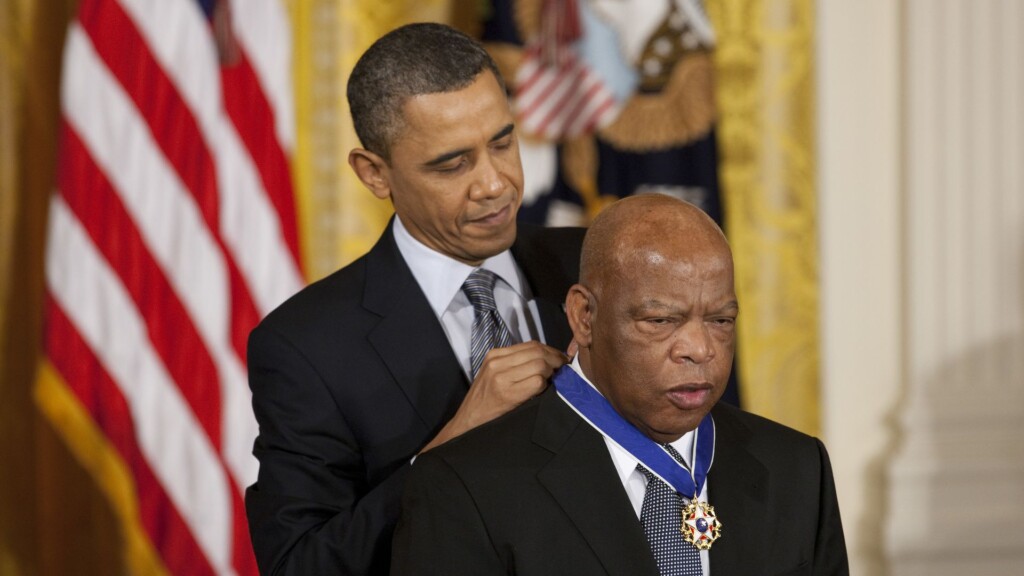
President Barack Obama awards Congressman John Lewis the Presidential Medal of Freedom
Barack Obama was sworn in as the first Black president of the United States on January 20, 2009. Obama’s inauguration set an attendance record, with 1.8 million people gathering in the cold to witness it. Obama was sworn in by Chief Justice John Roberts Jr. with the same Bible President Abraham Lincoln used at his first inaugural.
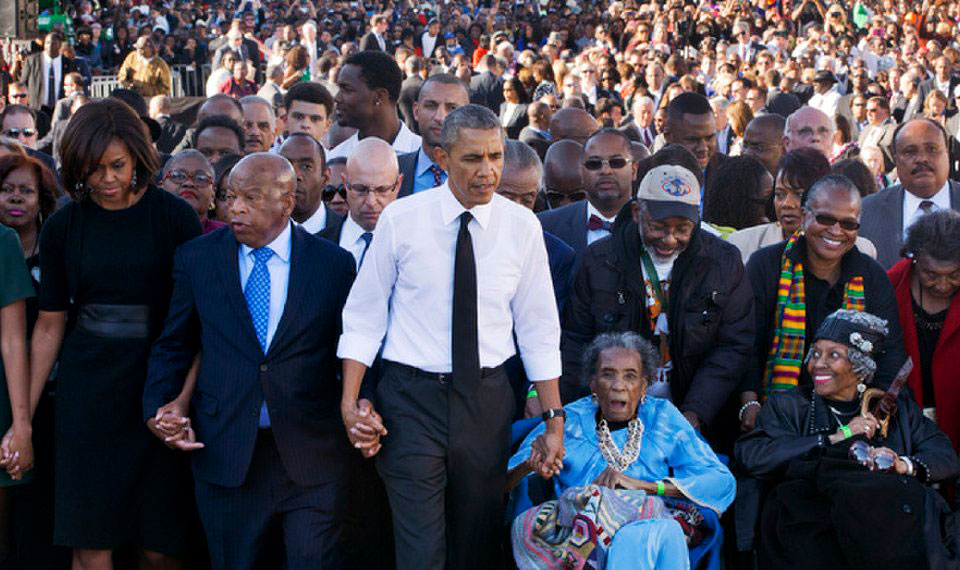
KAMALA HARRIS AND SHIRLEY CHISOLM
When Kamala Harris entered the 2020 U.S. presidential race, she chose campaign materials with a sleek typeface and red-and-yellow-color scheme that mirrored those of the late politician Shirley Chisholm, who made history in 1972 after becoming the first Black woman to compete for the Democratic Party’s presidential nomination. Although neither Chisholm nor Harris won the presidency, they are among the many women presidential candidates who “helped to put 18 million cracks” in “that highest, hardest glass ceiling,” as Hillary Clinton put it after losing the 2016 election. We congratulate Madam Vice President Kamala Harris, on her recent victory and subsequent election as the Vice President of the United States of America.
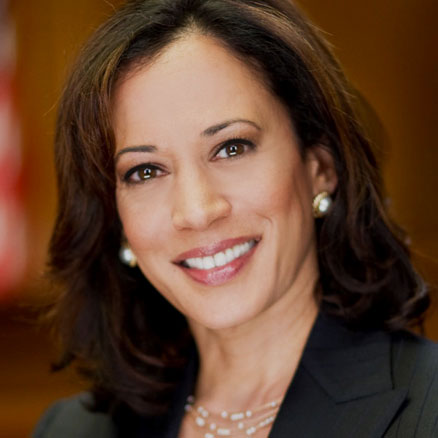
Kamala Harris 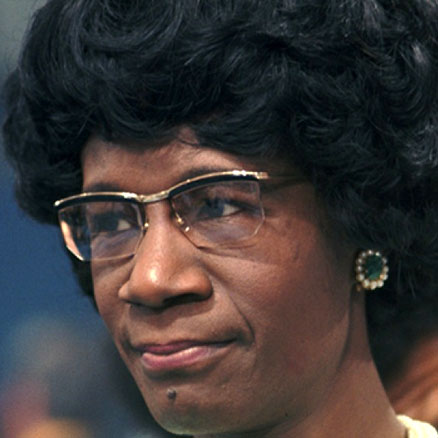
Shirley Chisolm
As African Americans, Chisholm and Harris belong to a select group of Black women who’ve run for president, bucking society’s often narrow expectations for women of their race.
COLIN POWELL
Jamaican-American military official and diplomat Colin Powell was born in New York in 1937. After serving two tours in Vietnam, he ascended the military ranks while earning positions at the Pentagon and the Department of Defense. Powell was named national security adviser to President Ronald Reagan in 1987, and in 1991 he took over as joint chief of staff. He became a national figure during the Persian Gulf War, developing the “Powell Doctrine,” as chief military strategist. Powell became President George W. Bush’s secretary of state in 2000, but resigned in 2004 after acknowledging his defense of an Iraq invasion was based on faulty information.
CONDALEEZA RICE
On January 26, 2005, President George W. Bush appoints Condoleezza Rice to the post of secretary of state, making her the highest ranking African American woman ever to serve in a presidential cabinet.
A native of Birmingham, Alabama. Dr. Rice’s credentials included advanced degrees in political science and international relations from prestigious schools, followed by a post as Stanford University provost. At Stanford, she honed her reputation as an expert in Soviet affairs, catching the attention of the Reagan administration. In 1986, at Reagan’s behest, Dr. Rice served on the Council on Foreign Relations, and then secured an appointment as special assistant to the director of the Joint Chiefs of Staff from 1989 to 1991. The first President Bush elevated Dr. Rice to director of Soviet and East European affairs in the National Security Council. She also served as the senior President Bush’s special assistant for national security affairs. President George W. Bush renewed her advisory role in the White House when he appointed her national security advisor in his first term.

Condoleeza Rice 
Stacey Abrams 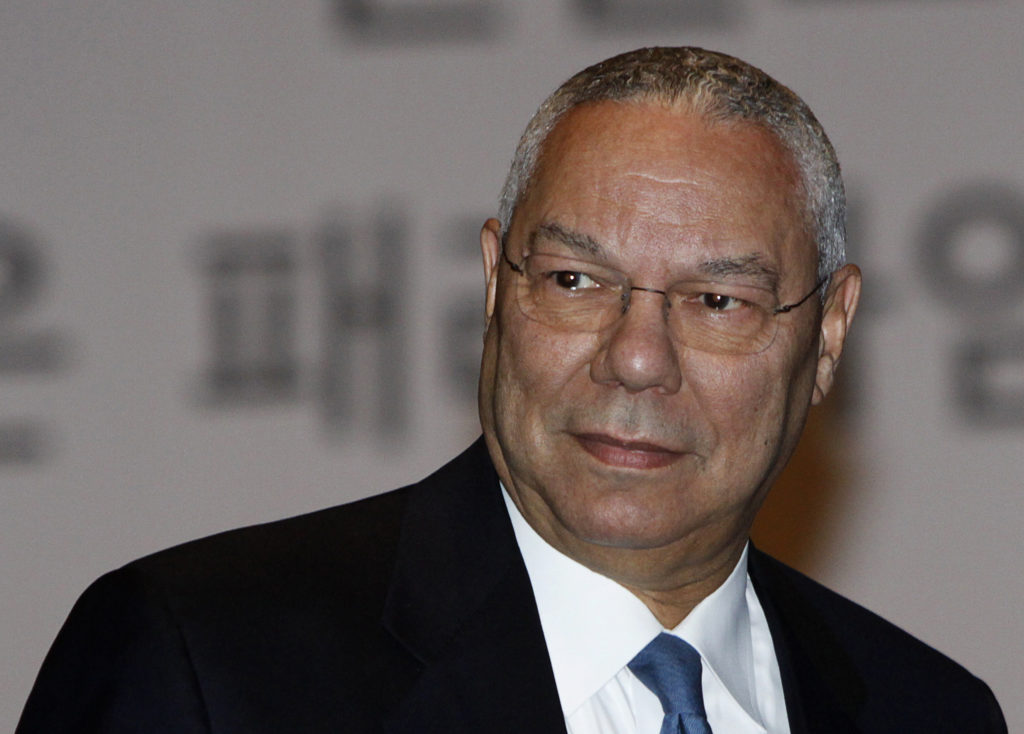
Former U.S. Secretary of State Colin Powell
STACEY ABRAMS
Stacey Yvonne Abrams born December 9, 1973 is an American politician, lawyer, voting rights activist, and author who served in the Georgia House of Representatives from 2007 to 2017, serving as minority leader from 2011 to 2017. A member of the Democratic Party, Abrams founded Fair Fight Action, an organization to address voter suppression, in 2018. Her efforts have been widely credited with boosting voter turnout in Georgia, including in the 2020 presidential election, where Joe Biden won the state, and in Georgia’s 2020–21 U.S. Senate election and special election, which gave Democrats control over the Senate. In 2021, Abrams was nominated for a Nobel Peace Prize, for her efforts in the 2020 election.
JESSIE JACKSON AND JOHN LEWIS
Jessie Jackson, civil rights leader and two-time Democratic presidential candidate (1941–) became one of the most influential African-Americans of the late 20th century. He rose to prominence working within Martin Luther King Jr.’s Southern Christian Leadership Conference (SCLC) and was at the Memphis hotel with King when he was assassinated. Through PUSH, the organization he founded in 1971, Jackson pressed for broader employment opportunities for African-Americans. During the 1980s and 1990s he negotiated the release of dozens of international hostages and prisoners. In his 1984 and 1988 presidential campaigns, Jackson won 16 state contests and millions of votes, making him the first viable African-American candidate for president.
Congressman John Lewis and other activists who practiced civil disobedience in the 1960s knew their opponents wouldn’t show them civility in return. John Lewis, a leader of the civil rights movement who co-founded the Student Nonviolent Coordinating Committee, was arrested 40 times between 1960 and 1966 for protesting racist laws and practices in the Jim Crow South. During the first attempt to march from Selma to Montgomery for voting rights on March 7, 1965, state troopers and “deputized” white men beat him so badly they fractured his skull.
FIVE FORMERLY ENSLAVED TURNED STATESMEN
From a former manservant to a little-known Civil War veteran, these five men rose from slavery to become part of the America’s first generation of Black legislators.
1. Blanche K. Bruce
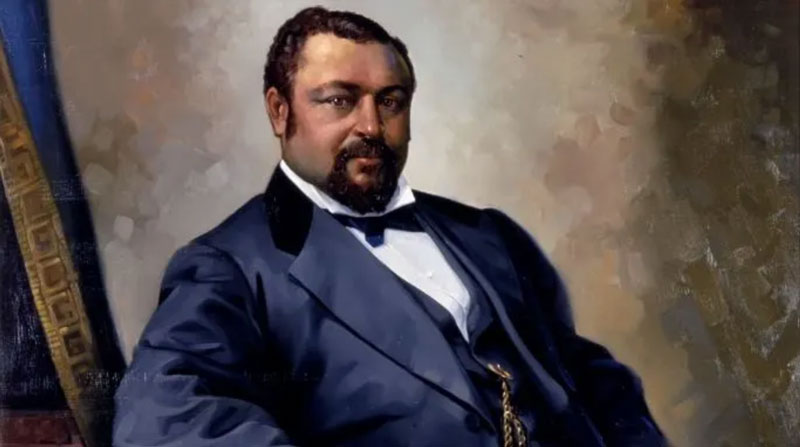
Blanche Bruce. (Credit: Public Domain)
In 1874, the Mississippi legislature elected Bruce to the U.S. Senate, making him the second Black senator in American history
The son of an enslaved black woman and her white master, Blanche Bruce grew up a house servant on plantations in Virginia, Mississippi and Missouri. He had a privileged upbringing by slave standards and was permitted to study with a private tutor, but when the Civil War broke out, he seized his chance at freedom and fled to Kansas. Bruce later worked as a teacher and opened Missouri’s first school for Black children before moving to Mississippi in the late-1860s. He arrived in the state with only 75 cents to his name, but within a few years, he became a successful land speculator and planter. His sharp mind and genteel demeanor also made him a rising star in the Mississippi Republican Party, leading to jobs as a sheriff, tax collector and county superintendent of education.
In 1874, the Mississippi legislature elected Bruce to the U.S. Senate, making him the second Black senator in American history and the first to serve a full six-year term. He spent much of his tenure defending black Civil War veterans and fighting segregation, but also spoke out in support of Chinese immigrants and Native Americans. During an 1879 debate on the Chinese Exclusion Act, he became the first African American to preside over a Senate session. While the collapse of Reconstruction doomed Bruce to a lone term in the Senate, the formerly enslaved legislator remained active in politics and later spent several years as register of the Treasury, a role that saw his signature appear on all the nation’s paper currency.
2. Robert Smalls
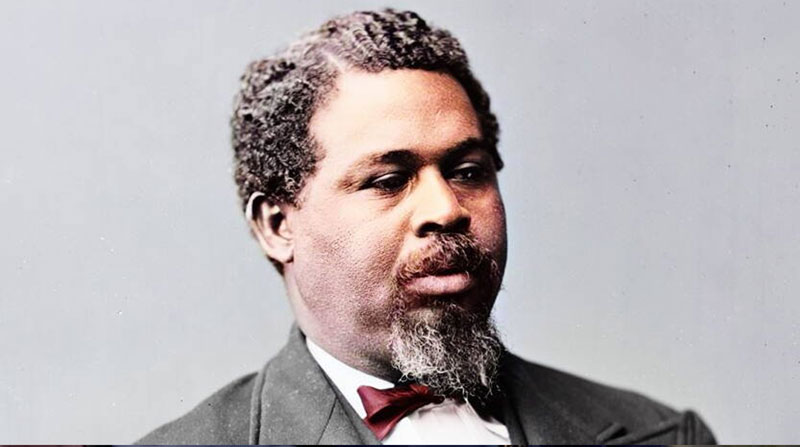
Robert Smalls. (Credit: Public Domain)
Inspirational Mother of a Martyr
Robert Smalls’ journey from slave to U.S. Congressman began with a famous act of defiance. In 1862, the South Carolina native was serving as a wheelman aboard a Confederate steamer called the Planter. When the white crew took an unsanctioned shore leave in Charleston in the early morning hours of May 13, Smalls and several other slaves hijacked the ship, piloted it past Fort Sumter and surrendered it to a Union blockading squadron. Smalls went on to captain the Planter for the Navy. After the Civil War ended, he used his reward for capturing the ship to purchase his former master’s home in Beaufort, South Carolina.
In the late 1860s, Smalls parlayed his celebrity as the “hero of the Planter” into a political career. He helped organize South Carolina’s burgeoning Republican Party, and later served in the state legislature before winning a seat in the U.S. House of Representatives in 1875. As a congressman, Smalls promoted Black voting rights and introduced legislation that would have desegregated the U.S. military, but his five terms were often hindered by political sabotage and election fraud by white supremacist forces. After losing his final congressional race in 1886, he returned to South Carolina and worked as a U.S. customs collector.
3. Joseph Rainey
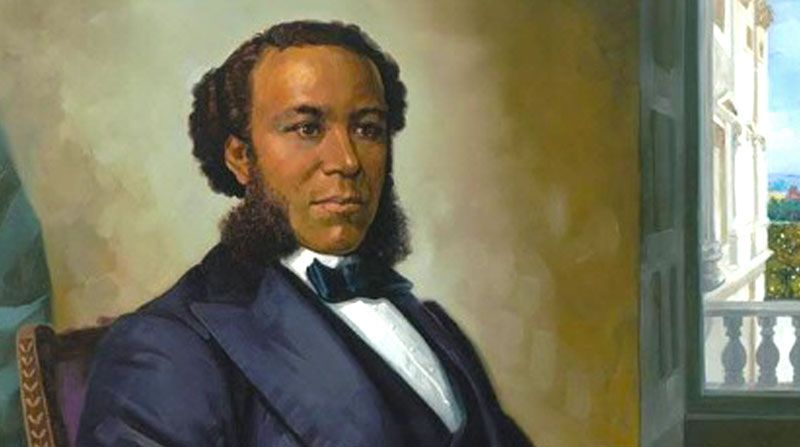
Joseph Rainey. (Credit: Public Domain)
In 1870 Joseph Rainey won a special election and became the first Black member of the U.S. House of Representatives.
Though born into bondage, South Carolina’s Joseph Rainey won his freedom as a boy after his parents bought their family out of slavery. He went on to a prosperous career as a Charleston barber, but in 1861, the Confederacy pressed him into service as a trench digger and ship’s cook. Not willing to endure slavery a second time, Rainey fled to Bermuda, where he laid low and continued working as barber until the Civil War ended. Upon returning home in 1866, he reinvented himself as a politician and served in the South Carolina state senate. Just four years later, he won a special election and became the first Black member of the U.S. House of Representatives.
In Congress, Rainey established himself as a moderate Republican willing to make compromises in the fight for equality. He supported amnesty for former Confederates and even advocated a Jim Crow-style poll tax to fund education, but he also urged the federal government to deploy the army against the Ku Klux Klan and other white supremacist groups. Criticizing the Klan put Rainey’s life at risk. He once received an anonymous letter warning him to “prepare to meet your God,” but despite the looming threat of assassination, he remained in the Congress for five consecutive terms—longer than any Black politician during Reconstruction.
4. John R. Lynch

John R. Lynch. (Credit: ullstein bild/Getty Images)
Young but a proven eloquent speaker, Lynch stood up to White supremacist groups arguing that they achieved their political aims “by the power of the bullet and not by the power of the ballot.”
The son of an Irish overseer and an enslaved mother, John Lynch spent his first formative years toiling on a Mississippi plantation before being freed by Union troops during the Civil War. He later worked as a waiter, cook and the manager of a photography studio by day, but used his nights to attend grammar school and read books on law. Lynch soon became active in politics, and in 1869 he was appointed justice of the peace and elected to the Mississippi House of Representatives. His remarkable rise continued in 1872, when he defeated a judge to win a seat in Congress at the age of just 26.
Despite his youth, Lynch proved to be a savvy politician and eloquent speaker. He spoke in favor of the Civil Rights Bill of 1875, and offered harsh criticisms of white supremacist groups, which he argued achieved their political aims “by the power of the bullet and not by the power of the ballot.” Lynch served three non-consecutive terms in the House before being swept from office after the collapse of Reconstruction. His resume later included stints as a lawyer, a Republican National Committee member and a U.S. army major during the Spanish-American War. Before his death in 1939, he also penned several books and articles that highlighted the accomplishments of Black politicians during Reconstruction.
5. Josiah Walls

Josiah Walls (Credit: Public Domain)
Freedom Rider and Nonviolent Student Activist for Desegregation
Until as recently as 1993, a onetime slave named Josiah Walls was the only Black congressman in Florida history. Born in Virginia in 1842, Walls came of age on a plantation before being conscripted by the Confederacy during the Civil War. He was later captured and set free by Union forces, and after a brief period as a student in Philadelphia, he joined a regiment of United States Colored Troops and served in Union-occupied Florida. Walls chose to stay in the Sunshine State after being mustered out of service in 1865. He soon prospered as a teacher and lumber worker, and by 1868 he was wealthy enough to buy a plantation that had once belonged to a Confederate general.
Walls’ early political career included terms in both houses of the Florida state legislature. In 1870, he squared off against an ex-Confederate named Silas Niblack in a race for a U.S. House of Representatives seat. The campaign was notoriously heated. Walls only narrowly dodged an assassin’s bullet during a rally, and both sides complained of voter intimidation and ballot irregularities. Even after Walls eked out a victory, Niblack contested the results and had them overturned. Walls soon won a different seat in Congress, however, and went on to serve a total of three terms, during which he advocated for infrastructure improvements and federal programs to provide Black people equal access to education. He left office in 1877 as Florida’s most prominent African American politician, and later returned to the state legislature before devoting himself to farming.
Content provided courtesy of History.com, Britannica.com and Wikipedia All Rights Reserved.


